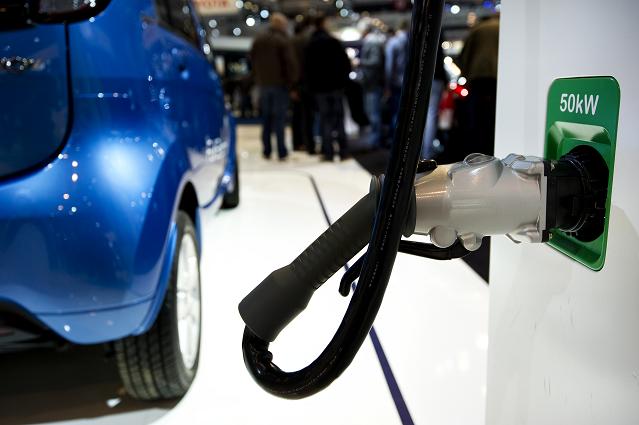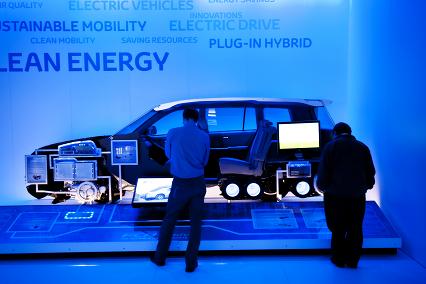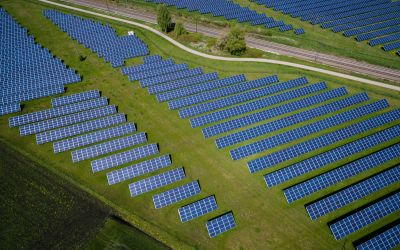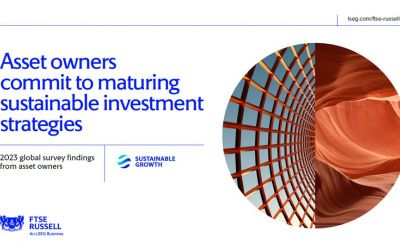Smarter cars in smarter cities
The smart cities and the cars of the future need each other to succeed. Combining smarter cars with smarter infrastructure is one of the best ways of ensuring that cities establish a sustainable, mobile transport environment. The European automobile industry’s investment in innovation upholds its commitment to leading development in vehicle connectivity, but it needs the support and investment of government and infrastructure providers to get new and emerging technologies onto the roads.
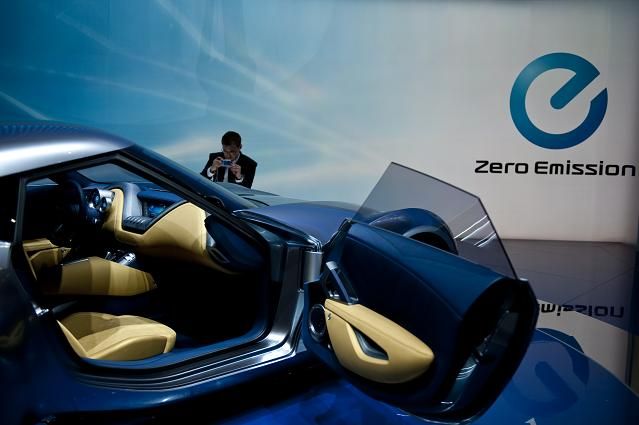
The world we live in is shaped by the transport options open to us. Indeed, as transport technology has evolved it has had to be adapted to existing structures, but it has also completely changed how urban and rural spaces have grown.
The centres of Europe’s surviving medieval cities are intricate arrangements of streets organised primarily for walking or driving a horse, as these were the prevailing transport modes of the time. Many of these ‘old’ towns and cities can be traversed on foot in under half an hour. Paris, a giant metropolis by old-world standards, is still just a two-hour walk top-to bottom. These urban centres grew up to be a manageable size – often surrounded by walls – because of the imperative to facilitate the supply of goods and services, the easy expunging of waste and the implicit need for easy deployment of city defence forces.
The result of these cities growing up as they did is that modern forms of transport have been bolted on as they have arrived. Train stations are often on the outskirts of towns and cities. This is partly because early steam locomotives had the unfortunate tendency of exploding ferociously or of running out of control, but is also because placing them right in the centre would have involved knocking down thousands of existing buildings. However, rail, in particular, can be credited with transforming the early modern world. The Industrial Revolution would never have happened without the then new-fangled way of transporting heavy loads and people over formerly exhaustingly impossible distances.
The world we live in is shaped by the transport options open to us
The internal combustion engine automobile came relatively late to the transport game, arriving to a world that barely had paved roads and very little designated on-street parking. Driving a car in such places as Bruges in Belgium, the old centre of London or the city of Lucca in Italy is still a dauntingly difficult task and the cities are narrow mazes. Many of these places weren’t even designed with cycling in mind: most medieval cities had (and some still do) cobblestones: pretty uncomfortable on a bicycle!
Such has been the success of the automobile since the 1950s that the evolution of our cities has been dramatically changed by their existence. While inner cities tend to retain their pre-automotive layouts, suburban areas built since often have wider streets laid out in relatively logical patterns. There is usually better parking, with garages sometimes incorporated into houses or apartment blocks. Motor vehicle ownership has not only transformed how we get around, but it has also transformed the buildings we travel between.
However, despite the remarkable innovations, levels of refinement, efficiency and safety, and despite the transformative power of mass car use, the vehicles themselves have not fundamentally changed from those of the Ford Model T in the early 20th century. Cars are still used in the same way: they have four road wheels, a motor, a steering wheel, and they have to be guided to their destination. They are still, despite the heated seats and the on-board entertainment systems, relatively dumb.
The need to be smart
The popularity of motor vehicles – particularly cars – has therefore come with costs, partly caused by this overall primitiveness. The chief concerns are the congestion, safety and environmental issues that the use of automobiles causes in cities. There are over 240 million cars in Europe alone – about one car for every two people on the continent – and about three quarters of the population live in urban settings.
What Europe needs, if it is ever to realise the dream of genuinely ‘sustainable’ mobility, is smart mobility
There are so many cars in Europe that were the entire fleet to be parked all next to each other at the same time, they would completely cover an area the size of Luxembourg. Most of these cars are in urban environments, and cause congestion that the EU estimates costs €100 billion (US$128 billion) a year to the economy – around 1 per cent of the EU’s GDP. In the long run there need to be solutions developed to ensure that traffic congestion – and the pollution this causes – can be managed.
Simply building more roads is not a viable solution, and nor is it terribly effective in the long run. Smarter cars, and smarter roads for them to ride on, might be. Vehicle manufacturers have embraced the need to innovate in order to find solutions, but these are still works in progress. What Europe needs, if it is ever to realise the dream of genuinely ‘sustainable’ mobility, is smart mobility.
The European automotive industry regularly highlights the need for an ‘integrated approach’ to ensure this. This would see smarter and cleaner cars drive on the roads, supported by smarter infrastructure that would receive, analyse and transmit data sent to it by vehicles circulating on the roads.
Intelligent connectivity
Connectivity is a key enabler. Connecting vehicles to each other and to infrastructure requires a leap of coordination and investment on behalf both of carmakers and of infrastructure providers. The opportunities that this integrated application of technology could deliver are astonishing; and what is perhaps most remarkable is that most of the equipment and technical know-how needed to make a world of smart and sustainable mobility already exists.
Modern cars are increasingly extensions of our digital lives, and indeed most new cars are fitted with Bluetooth or docking stations, the smarter versions of which turn the whole vehicle into extensions of the docked smartphone. Phones, as well as other telecommunications technologies, are making it easier for digital services – for instance: traffic jam avoidance, parking space finders, and devices that inform the user about how fast they must drive to ensure they will never be caught at red lights – to proliferate.
This is changing how cars are used in the here and now. It is also affecting heavy goods transport: in Europe some 72 per cent of all goods are transported by road, but road networks are not infinitely expandable. However, with forward-thinking investments in intelligent transport and vehicle technology, freight could be made more efficient and faster, through such technologies as ‘platooning’ (travelling in very close succession) and automated driver support.
If automated vehicles become a reality – and are permitted to circulate, possibly without a driver at the helm (though this is far off due to the legal and practical ramifications automated machines arouse) – the potential arises for far greater efficiency in the use of road space.
The chief infrastructure-side group of technologies falls under the term ‘Intelligent Transportation Systems’ (ITS). ITS technologies are still in their relative infancy, but are evolving fast. However, they have the potential to revolutionise how the vehicles we use interact with each other and the roads. They could also open up the possibility of a whole new range of services – from driver aids (such as parking space finders) to whole networks (such as autonomous car sharing). Many of the required pieces are there, but they need to be fitted together if the ITS and smart car combination is ever going to anything other than an interesting technological curiosity.
With forward-thinking investments in intelligent transport and vehicle technology, freight could be made more efficient and faster, through such technologies as ‘platooning’
While nominally ITS may have applications for a range of transport modes, under the EU Directive 2010/40/EU, ITS is generally defined to apply to road/vehicle interfaces for road transport. ITS systems include such things as the eCall emergency notification system, road traffic management systems for varying speed limits or traffic flow, enforcement and collision prevention.
The motor vehicle industry actively contributes to discussions on ITS and aims to accelerate and coordinate the deployment of the technology in road transport, including for interfaces with other transport modes. Intelligent information and communication technologies will play a major role in bringing ITS technology to the roads. This has the potential to increase the efficiency of road use, improve safety outcomes and improve the environmental performance of vehicles.
Comprehensive deployment requires investment in technology both at vehicle fleet level and in the infrastructure they use. As the technology develops, it ought to find its way on to more and more vehicles. Similarly, ITS systems will play gradually more responsible roles in the way vehicles and traffic operate.
There are legal liability and privacy issues that connectivity and automation raises, and these must be addressed for the technology to have future. Vehicle manufacturers take data security very seriously as a result, and the discussion about how to protect vehicle owners and users is already under way.
In the long run, the combination of sophisticated smart vehicles and of ITS-enabled infrastructure could result in a paradigm shift when it comes to how we use or own vehicles. Innovation both on and off the roads has led to the development of new services, some of which have the potential to genuinely influence the automotive industry.
Cars that cooperate with each other and with the infrastructure would improve traffic flow and reduce the requirement for central parking. Together, smart, connected and cooperative technologies could help make tightly congested city centres move again.
The role of stakeholders
Getting to this smart and efficiently mobile future will require the involvement of most of the key stakeholders, each with their own part to play. Vehicle manufacturers need to develop technologies that customers actually want and will use. Infrastructure providers, spurred on by governments (who, after all, are likely to be major financial backers for large projects) need to meet industry half way and roll out cooperative ITS systems.
Government needs to enable the proliferation of connected cars (for example, by freeing up telecommunications bandwidth), and has to permit the use of smart and even automated vehicles on public roads, as some are beginning to do. Policy-makers also have the role of working out the chain of legal liability for autonomous, connected or smart vehicles and their data. Finally, all stakeholders need to work together to develop standards to that the technology is compatible globally.
With these pieces of the jigsaw put together, the future begins to look like the picture of the smart, sustainable mobility that the automotive industry has pushed for ever since the first cars motored through the streets of Europe’s ancient cities.
ACEA is hosting a conference on The Connected Car: Safe, Clean, Secure on 4 December 2014 in Brussels. More information can be found on the website at www.acea.be.

